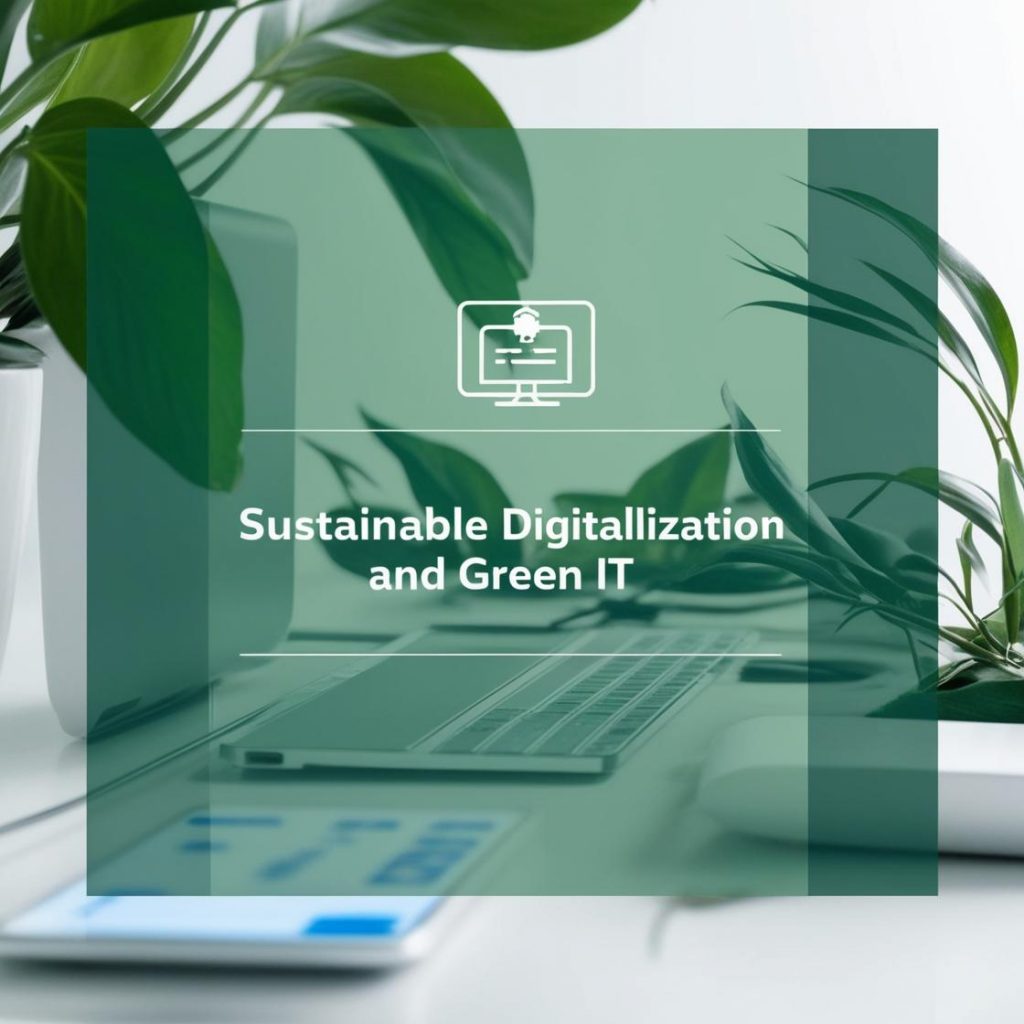
Sustainable digitalization
How Green IT shapes the transformation
Digital transformation has fundamentally changed the way we work, communicate and live. At the same time, awareness of the ecological impact of digitalization is growing. The energy consumption of data centers, the production of hardware and the increasing CO₂ emissions from IT infrastructures pose a challenge. But this is exactly where Green IT comes in: sustainable digitalization that combines technology and environmental protection.
What does Green IT mean?
Green IT refers to the use of information and communication technologies (ICT) while taking ecological aspects into account. The aim is to minimize the environmental impact of digitalization while increasing the efficiency and performance of IT systems.
Green IT includes not only energy consumption, but also aspects such as the service life of hardware, the reuse and recycling of materials and the sustainable design of digital processes.
Why is sustainable digitalization important?
Digital transformation is an important driver of economic growth and innovation. But it is often accompanied by high resource consumption:Data centers consume immense amounts of energy and are responsible for around 1% of global electricity consumption. Electronic waste is constantly growing and poses a threat to the environment, as valuable raw materials often remain unused.Software can be inefficient and lead to unnecessary energy consumption. Sustainable digitization offers solutions to overcome these challenges and combines economic development with environmental awareness.
The role of green IT in the transformation
1. Energy-efficient data centers
Modern data centers rely on energy-efficient technologies such as liquid cooling and the use of renewable energies. Cloud providers such as Google and Microsoft are investing in sustainable infrastructures and are committed to climate neutrality.
2. Circular economy for hardware
A central aspect of green IT is extending the lifespan of devices. Refurbished hardware and recycling programs help to conserve resources and reduce environmental impact.
3. Sustainable software development
Green coding is a growing trend in software development. Software is designed to use fewer resources, for example through optimized algorithms or more efficient database queries.
4. Remote work and virtualization
The pandemic has shown that home offices and virtual meetings are not only practical, but can also reduce the burden on the environment. Less commuting and fewer business trips mean a reduction in CO₂ emissions.
Advantages of sustainable digitalization
- Cost savings: Energy-efficient systems and optimized processes reduce operating costs.
- Compliance with regulatory requirements: Many countries are tightening their environmental regulations, and Green IT helps to meet these.
- Competitive advantages: Companies that focus on sustainability are more attractive to customers and investors.
Challenges and solutions
However, the implementation of Green IT is not without hurdles. The challenges include the high initial investment in sustainable technologies and the need to modernize existing systems.
One solution is to integrate sustainability into the corporate strategy. Companies can define ecological goals, enter into partnerships with green providers and sensitize their employees to environmentally conscious use of technology.
The future of Green IT
Green IT is more than a trend – it is a necessity. With advances in artificial intelligence, the Internet of Things (IoT) and other technologies, new opportunities are emerging to put sustainability at the heart of digitalization.
The combination of technological progress and environmental awareness can lay the foundation for a greener and more sustainable future. Companies that integrate Green IT into their transformation not only contribute to climate protection, but also strengthen their innovative strength and competitiveness.
Conclusion:
Sustainable digitalization through Green IT is a decisive factor for the future. It shows that technological progress and environmental protection can go hand in hand. The challenge is to find a balance between growth, efficiency and resource conservation – a task that companies, governments and society must tackle together.

